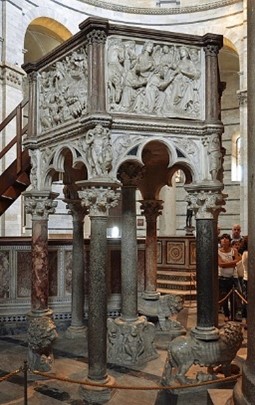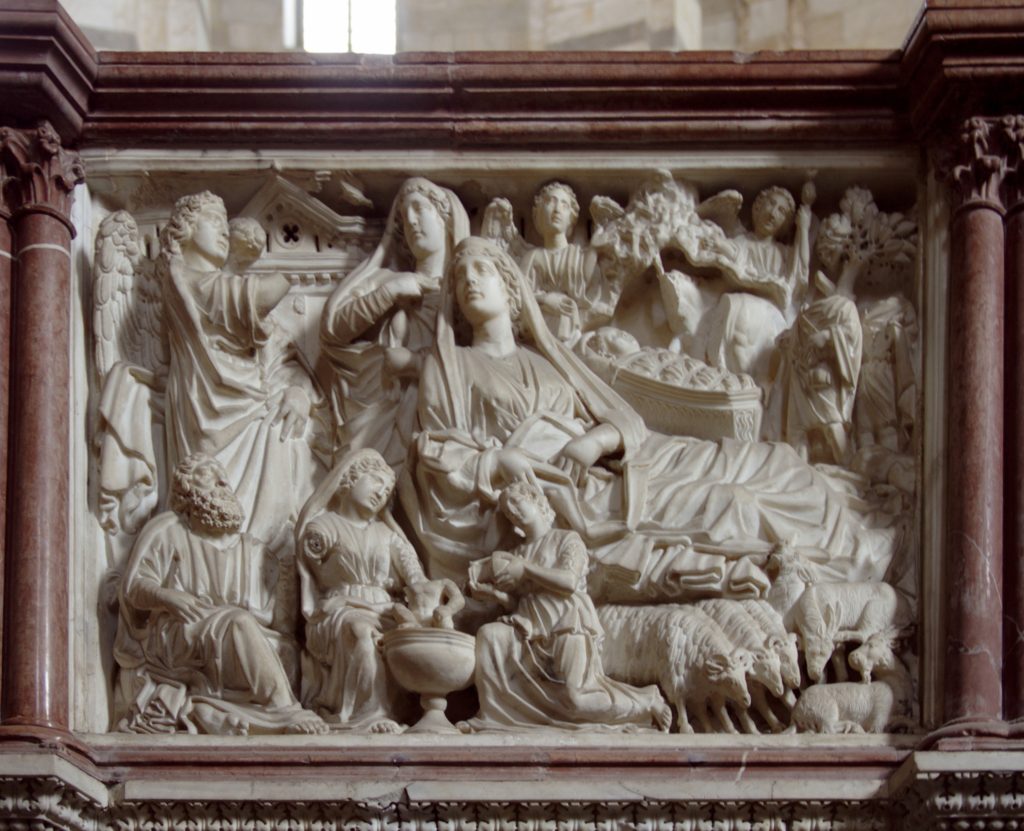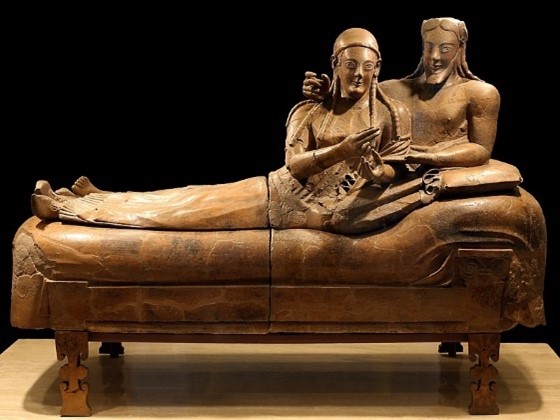Nicola Pisano
The sculptor Nicola d’Apulia (c. 1220/1225-c. 1284), better known as Nicola Pisano after his adopted city, received his early training in southern Italy. In 1250, Nicola traveled northward and eventually settled in Pisa. Then at the height of its political and economic power, the maritime city was a magnet for artists seeking lucrative commissions. Nicola specialized in carving marble reliefs and may have been the inventor of a new kind of church furniture – the monumental stone pulpit (raised platform from which priests delivered sermons) with supports in the form of freestanding statues and wraparound narrative reliefs depicting biblical themes.

Nicola fashioned the first such pulpit in 1260 for Pisa’s century-old baptistery. Some elements of the pulpit’s design carried on medieval traditions – for example, the trefoil (triple-curved) arches and the lions supporting some of the columns – but Nicola also incorporated classical elements. The large capitals with two rows of thick overlapping leaves crowning the columns are a Gothic variation of the Corinthian capital. The arches are round, as in Roman architecture, rather than pointed, as in Gothic buildings. Also, each of the large rectangular relief panels resembles the sculpted front of a Roman sarcophagus.

The densely packed large-scale figures of the individual panels also seem to derive from the compositions found on Roman sarcophagi. One of the six panels of the baptistery pulpit depicts scenes from the infancy cycle of Christ, including the Annunciation (top left), Nativity (center and lower half), and Adoration of the Shepherds (top right). Mary appears twice, and her size varies. The focus on the composition is the reclining Virgin of the Nativity episode, whose posture and drapery are reminiscent of those of the lid figures on Etruscan and Roman sarcophagi. The face types, beards, and coiffures, as well as the bulk and weight of Nicola’s figures, also reveal the influence of classical relief sculpture. Art historians have even been able to pinpoint the models of some of the pulpit figures, including the reclining Mary, in Roman sculptures in Pisa.[1]

- Fred S. Kleiner, Gardner’s Art Through the Ages: The Western Perspective, vol. 2, 15th ed., (Boston: Cengage Learning, 2017), 412-414. ↵

